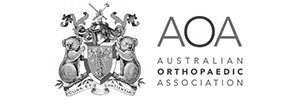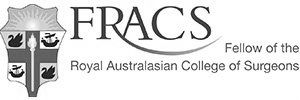Achilles Tendon Surgery
What is Achilles Tendon Surgery?
Achilles Tendon Surgeries are a group of procedures designed to resolve a number of Ankle or Achilles Tendon problems and injuries.
The surgeries include:
- Ankle Arthroscopy
- Gastrocnemius recession -
- Anke Débridement and Repair - tendon has less than 50% damage
- Débridement with Tendon Transfer - tendon has more than 50% damage
What Does Achilles Tendon Surgery Treat
The procedure can be performed individually or in combination generally they treat the following conditions:
- Ankle Arthroscopy -
- Gastrocnemius recession - to lengthen the calf (gastrocnemius) muscles
- Ankle Débridement and Repair - to remove any damaged tendon and repair with sutures and stitches what remains
- Débridement with Tendon Transfer - to remove damaged tendons and repair by adding transferred tendons to build up the the Achilles strength
When is Achilles Tendon Surgery Indicated
Achilles tendon repair surgery is indicated for patients with Tendinopathy, surgery may also be recommended especially for
- competitive athletes,
- those who perform physical work, or
- in instances where the tendon re-ruptures.
The advantage of a nonoperative approach is in particular to Ruptured Achilles Tendons is avoidance of any wound complications. The main disadvantage of a non-surgical approach is the higher re-rupture rate and the risk that the heal tendon is “stretched out” and the calf is weaker as a result.
About Gastrocnemius Recession
Gastrocnemius Recession involve the surgical lengthening of the calf (gastrocnemius) muscles. Tight calf muscles place increased stress on the Achilles tendon, and causes difficulty flexing their feet, despite consistent stretching. Lengthened muscles increase the ankles range of motion of the ankle
Débridement and Repair Surgery
Débridement and Repair may be suitable when less than 50% of the tendon is damaged. The damaged part of the Achilles tendon is removed, followed by tendon repaired with sutures, or stitches.
In Insertional Tendinitis, the bone spur is also removed. Repair of the tendon in these instances may require the use of metal or plastic anchors to help hold the Achilles tendon to the heel bone, where it attaches.
Débridement with Tendon Transfer Surgery
Débridement with Tendon Transfer may be suitable when less than 50% of the tendon is damaged. The damaged part of the Achilles tendon is removed, and if the remaining portion of the tendon is not strong enough to function alone an Achilles tendon transfer is performed. This additional tendon is used to prevent the remaining tendon from rupturing with activity,
The extra tendon used is the tendon that helps the big toe point down. This is moved to the heel bone to add strength to the damaged tendon. The big toe will still be able to move, and most patients will not notice a change in the way they walk or run. After the tendon Transfer the tendons repaired with sutures, or stitches.
Other Achilles Tendon Procedures
Achilles Tendon Surgery Process
Achilles Tendon Rehabilitation Program
Achilles Tendon Risks & Complications Associated
Surgical Follow Ups
How Risks Are Minimised
Get Moving Quickly
Early mobilisation is a major preventive measure. We strongly encourage you to get moving and out of bed as soon as possible after the operation to restore normal blood flow in the legs.
You should aim to do at least ten short walks (of between 2 and 5 minutes) each day in the first two weeks after surgery.
What Are the Consequences of Surgery?
Sometimes the potential risks and consequences of your surgical procedure need to be weighed against the benefits of a successful surgical outcome.
Like most surgery these benefits can include:
- Freedom from pain
- Increase movement
- Greater Flexibility,
- Maintained Independence
- Improved outlook, and
- Longer more enjoyable life
Although the recurrence of the presenting problem is not very common, after surgery, you would need to follow preventive measures.
It is important to avoid high impact activities during the early phase of recovery to minimise the risk of further injury. If there are any postoperative concerns or pain, please do not hesitate in contacting our rooms.






